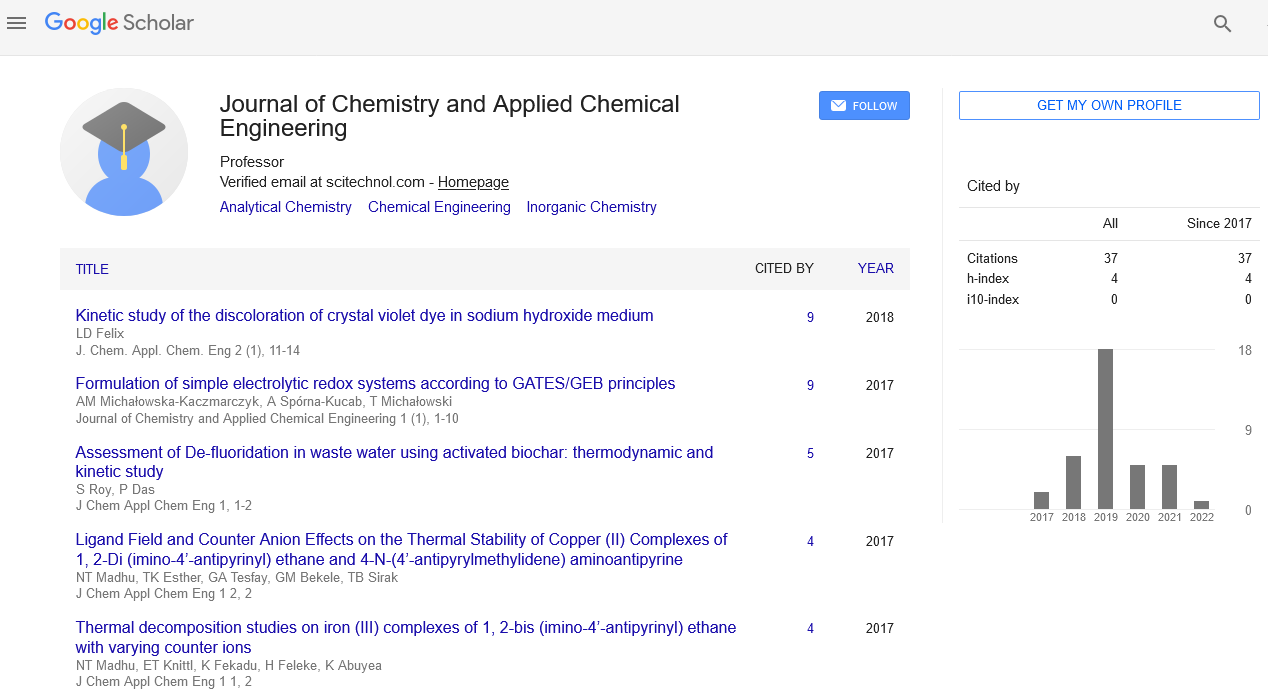Mass transfer promotion by black body material to improve the CO2 reduction performance of TiO2 photocatalyst
Akira Nishimura
Mie University, Japan
: J Chem Appl Chem Eng
Abstract
One of promising CO2 utilization technologies is CO2 photocatalytic reduction. TiO2 is the most popular photocatalyst used for CO2 reduction. Though there are some reports investigating the CO2 reduction performance of TiO2 , it is still low. The author sets the strategies to promote the CO2 reduction performance of TiO2 as follows: (i) to extend the wave length absorbed from ultraviolet light to infrared lay including visible light, (ii) to utilize the infrared ray for the mass transfer around the photocatalyst via the radiation. The strategy (i) is carried out by doping phosphorus on TiO2 .Though some papers reported the effect of metal doping aimed for the visible light absorption on the CO2 reduction performance, there is no report to investigate the effect of doping for absorption of infrared ray as well as visible light on the CO2 reduction performance of TiO2. The strategy (ii) is based on the previous study by the author which reported the products above the photocatalyst disrupts to contact the reductants with photocatalyst and attract the reverse reaction from products to reductants, resulting in small amount of product. Therefore, the author suggests to promote the mass transfer by the black body material located under the photocatalyst with porous structure which can penetrate the light. Due to radiation from the black body, the gas temperature around the photocatalyst rises, which expects the promotion of mass transfer by natural convection heat transfer. This study reports the effect of these strategies on the CO2 photocatalytic reduction performance of TiO2 . This study revealed that the hypothesis worked and that the CO2 reduction performance is promoted more with three black body materials (W B.B.-3) compared to that with one black body material (W B.B.-1). The maximum concentration of formed CO with W B.B.-3 is two to five times as large as that under the condition without black body material (W/O B.B.).
Biography
Dr. Akira Nishimura is an associate professor in Division of Mechanical Engineering at Mie University, Japan. He received the B.S. Eng., the M.S. Eng. and Dr. Eng. degrees in Chemical Engineering from Nagoya University, Japan in 1995, 1997 and 2000, respectively. He worked at Center for Integrated Research in Science and Engineering, Nagoya University as research associate from 2000 to 2002. He moved to Mie University in 2002 as an assistant professor and promoted to associate professor from 2014. He has published 89 journal papers which are reviewed. His current researches are CO2 reduction by photocatalyst, H2 production from biogas, smart city utilizing renewable energy actively, clarification on heat and mass transfer mechanism of polymer electrolyte fuel cell.
 Spanish
Spanish  Chinese
Chinese  Russian
Russian  German
German  French
French  Japanese
Japanese  Portuguese
Portuguese  Hindi
Hindi 